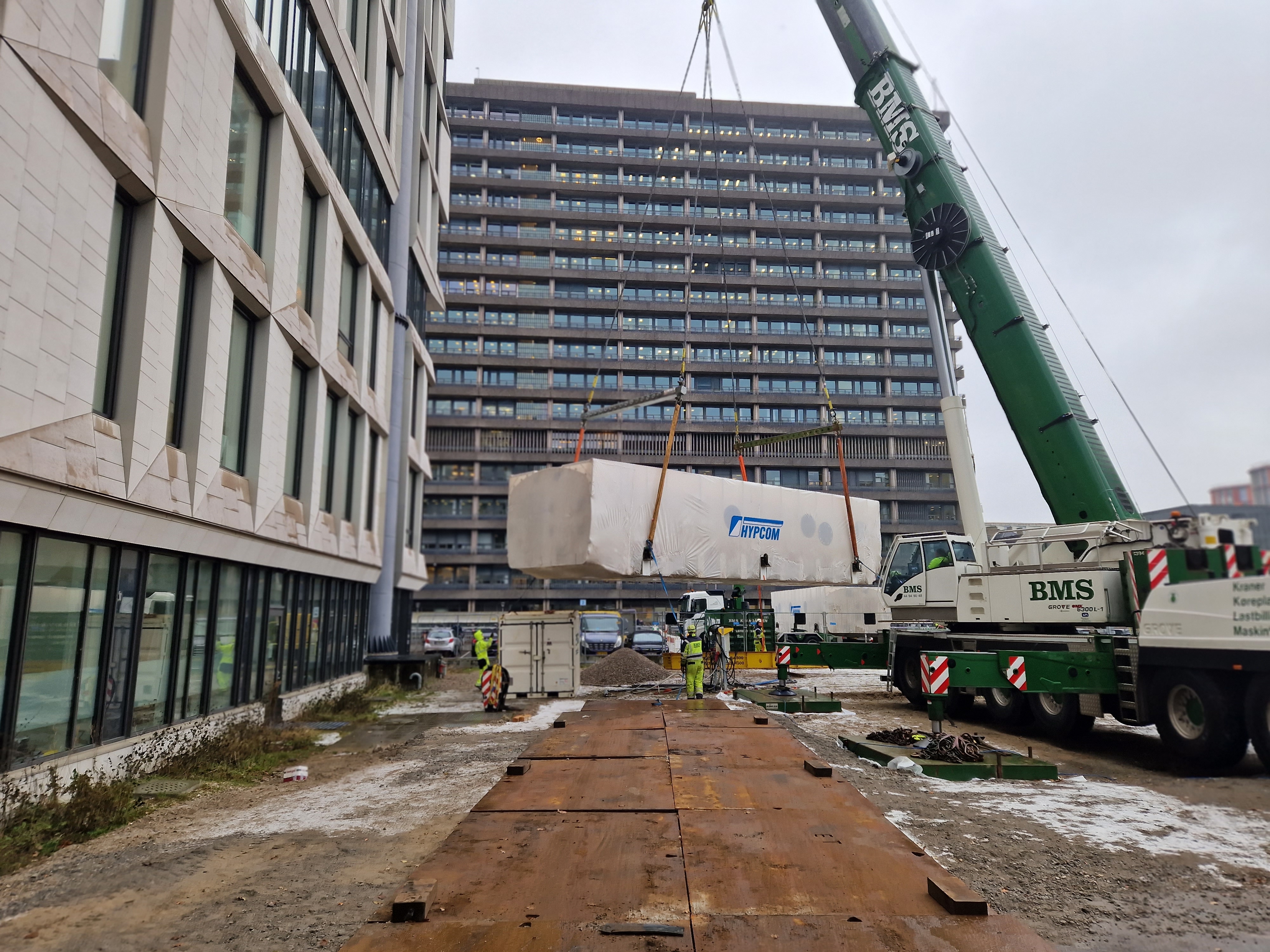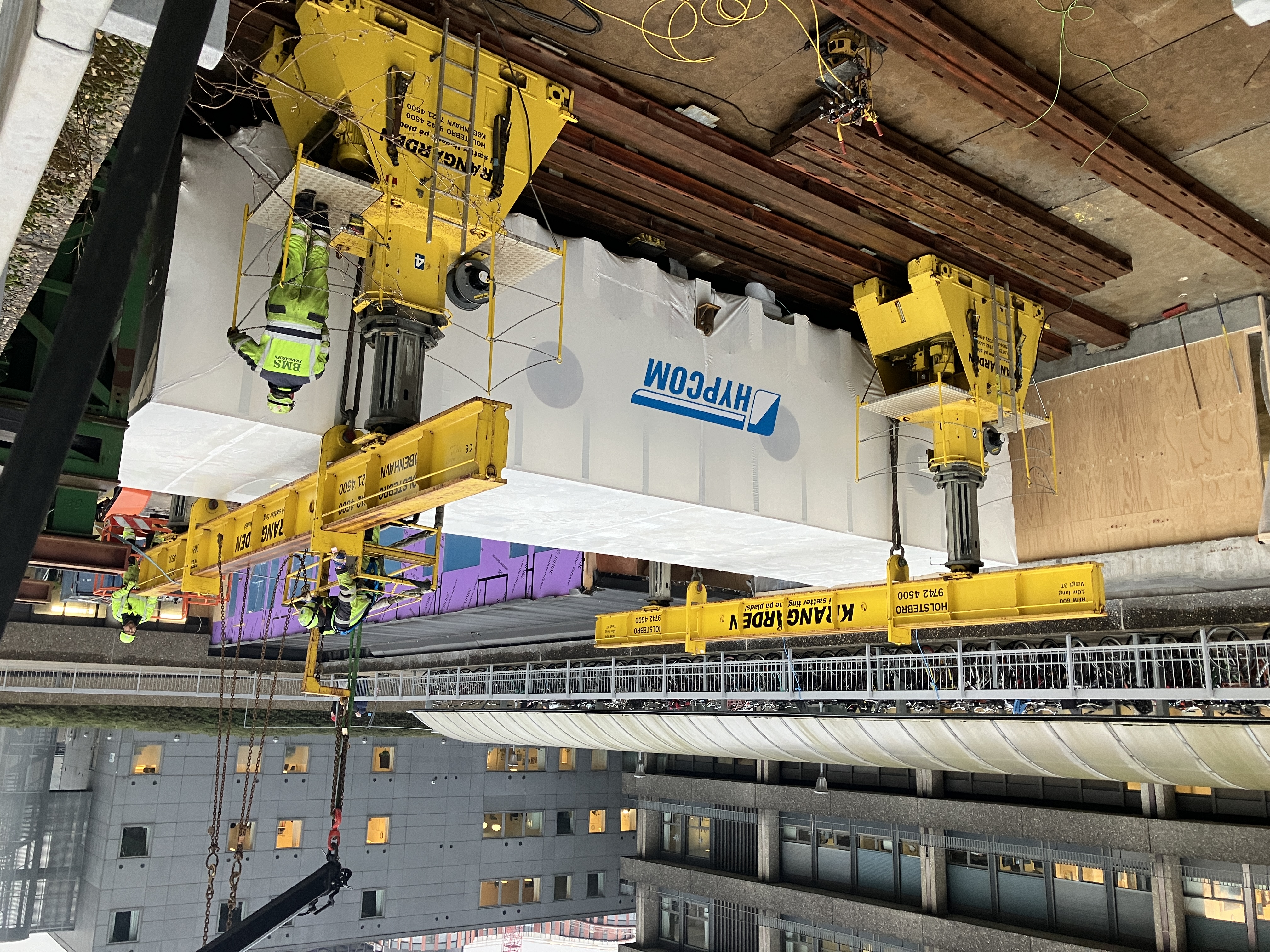TWO PRESSURE CHAMBERS FOR THE NATIONAL HOSPITAL
One of the hospital’s specialities is pressure chamber treatment in connection with, among other things, decompression sickness, life-threatening infections, wound healing, carbon monoxide poisoning and treatment of radiation sequelae from cancer treatment.
After six years of preparation, including countless calculations of the existing building, followed by excavations and reinforcements in the hospital’s basement, Rigshospitalet had two new pressure chambers installed. Not only did a fully operational hospital have to be considered, but also that the installation had to be performed in close proximity to the emergency room and trauma centre.
Due to the pressure chambers’ dimensions of 13 by 4 metres and a total weight of about 130 tonnes (the largest of them 72 tonnes), BMS had to devise a unique solution: a combination of lifting, skidding, and rigging with a 300-tonne mobile crane, 80-metre skidding tracks, support towers, and 1,000-tonnes hydraulic towers.
In the initial phase, the underground was prepared with pilings beneath crane outriggers and the skidding tracks, as it was necessary to ensure the loading distribution to the top of the basement’s concrete columns. Phase two required preparations of the entire pit with pilings for both tower and skidding ground loads. The actual lowering of the chambers was performed with just enough space to avoid collision with existing structures. Finally, in the third phase, skidding of the chambers inside the main building was performed with an absolute minimum clearance height.





